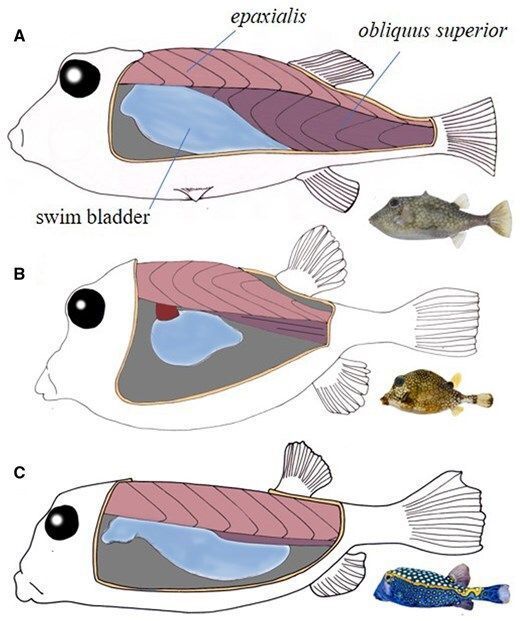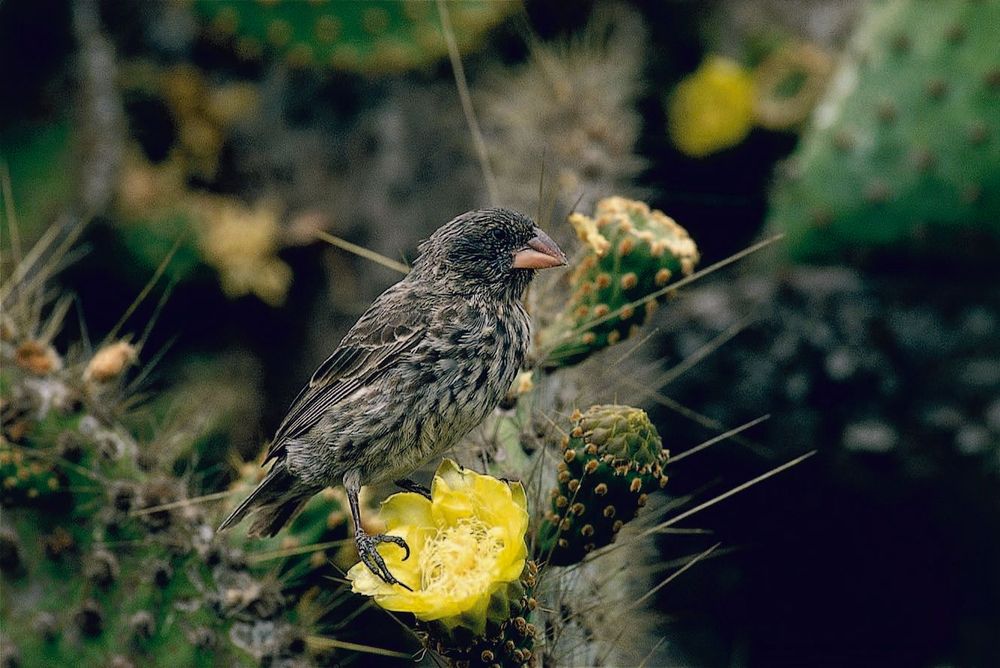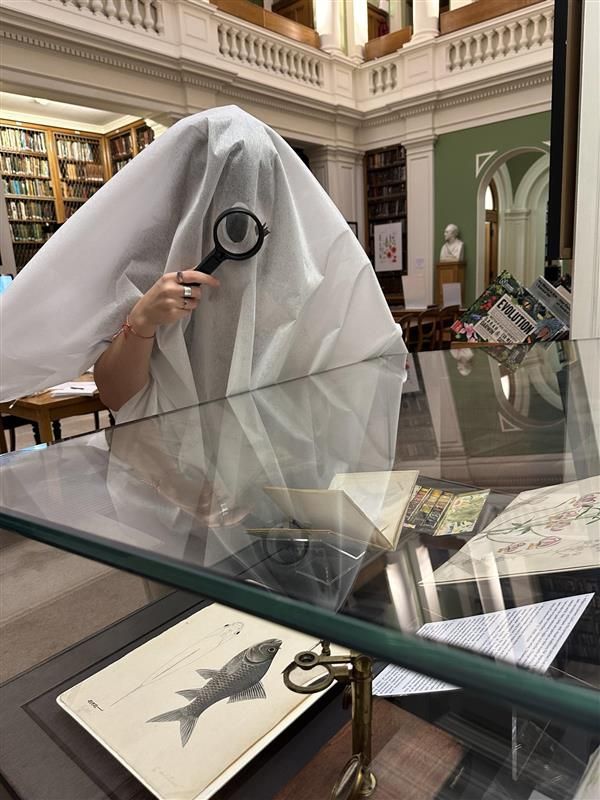
Homepage: https://academic.oup.com/botlinnean
Blog: https://www.linnean.org/news/categories/the-paper-trail
It turns out all species (Atlantic & Pacific) do, yet little is known about how this evolved. A novel structure found only in the Atlantic species offered the answer, but it isn't quite what you think...🌍 🧪
doi.org/10.1093/biol...

It turns out all species (Atlantic & Pacific) do, yet little is known about how this evolved. A novel structure found only in the Atlantic species offered the answer, but it isn't quite what you think...🌍 🧪
doi.org/10.1093/biol...
Not quite as catchy as the Queen hit, the phylogeny of broad-nosed weevils was explored using mitochondrial genomes of 130 species, helping to classify the subfamily & uncover their biogeography! 🌍👇🧪
doi.org/10.1093/zool...
@linneansociety.bsky.social

Not quite as catchy as the Queen hit, the phylogeny of broad-nosed weevils was explored using mitochondrial genomes of 130 species, helping to classify the subfamily & uncover their biogeography! 🌍👇🧪
doi.org/10.1093/zool...
@linneansociety.bsky.social

doi.org/10.1093/botl...

doi.org/10.1093/botl...
Two new species of the genus Cedrela from W Ecuador are described based on extensive comparative analysis, aiding in the classification of their conservation status! Both endangered by #Deforestation, this highlights the importance of continued research 👇
doi.org/10.1093/botl...



Two new species of the genus Cedrela from W Ecuador are described based on extensive comparative analysis, aiding in the classification of their conservation status! Both endangered by #Deforestation, this highlights the importance of continued research 👇
doi.org/10.1093/botl...
doi.org/10.1093/botl...

doi.org/10.1093/botl...
doi.org/10.1093/botl...
@linneansociety.bsky.social
@thiagojcandre.bsky.social
@cdspecht.bsky.social

doi.org/10.1093/botl...
@linneansociety.bsky.social
@thiagojcandre.bsky.social
@cdspecht.bsky.social

Following the success of our previous special issues, we're pleased to announce a new one on Bromeliaceae Evolution & Systematics! Keep an eye on our socials as we share papers over the next few weeks 🌍 🧪 👇
buff.ly/zVh5ORp

Following the success of our previous special issues, we're pleased to announce a new one on Bromeliaceae Evolution & Systematics! Keep an eye on our socials as we share papers over the next few weeks 🌍 🧪 👇
buff.ly/zVh5ORp
doi.org/10.1093/zool...
@linneansociety.bsky.social

doi.org/10.1093/zool...
@linneansociety.bsky.social


@linneansociety.bsky.social

@linneansociety.bsky.social
The acacia fruit doesn't fall far from the evolutionary tree in this new blog, written by guest blogger Josie Cooper! Ever wondered how plants defend themselves from plant-eating predators? In the case of swollen-thorn acacias, the answer is ants...a 🧵 (1/6) 🌍🧪
buff.ly/Sm4NQsQ

The acacia fruit doesn't fall far from the evolutionary tree in this new blog, written by guest blogger Josie Cooper! Ever wondered how plants defend themselves from plant-eating predators? In the case of swollen-thorn acacias, the answer is ants...a 🧵 (1/6) 🌍🧪
buff.ly/Sm4NQsQ
academic.oup.com/botlinnean/p...

academic.oup.com/botlinnean/p...
Not quite Frankenstein's monster, nuclear sequence capture was used on the orchid subtribe Calypsoinae, making a strong case for the resurrection of Kitigorchis as a sister to Corallorhiza! Read about it below 🌍🧪👇

Not quite Frankenstein's monster, nuclear sequence capture was used on the orchid subtribe Calypsoinae, making a strong case for the resurrection of Kitigorchis as a sister to Corallorhiza! Read about it below 🌍🧪👇
Ghost species (no, not species of ghost) are extinct, unknown & unsampled taxa...and they vastly outnumber those included in phylogenetics. This hidden diversity can complicate phylogenetic signals of horizontal gene flow, impacting their study...(1/2)🧪

Ghost species (no, not species of ghost) are extinct, unknown & unsampled taxa...and they vastly outnumber those included in phylogenetics. This hidden diversity can complicate phylogenetic signals of horizontal gene flow, impacting their study...(1/2)🧪
Pterostylis orchids use sexual deception as a pollination strategy, with fungus gnats (Diptera) falling victim, acting as the main pollinators of these deceptive plants! 🌍🧪👇
academic.oup.com/botlinnean/a...

Pterostylis orchids use sexual deception as a pollination strategy, with fungus gnats (Diptera) falling victim, acting as the main pollinators of these deceptive plants! 🌍🧪👇
academic.oup.com/botlinnean/a...
Today we're sharing molecular biologist Glenn Yannic, whose research focuses on the consequences of environmental & anthropogenic changes on the genetic diversity of alpine & arctic species.
Book to see Glenn Nov 20 🌍🧪👇
buff.ly/bLADJcs.?mso...

Today we're sharing molecular biologist Glenn Yannic, whose research focuses on the consequences of environmental & anthropogenic changes on the genetic diversity of alpine & arctic species.
Book to see Glenn Nov 20 🌍🧪👇
buff.ly/bLADJcs.?mso...
Today we're highlighting Chloe Haberkorn, a biologist who specialises in evolutionary genomics, currently in yeast! Her PhD focused on resistance mechanisms in bed bugs (scream).
Come see Chloe on Nov 20 🧪🌍👇
buff.ly/bLADJcsmsock...
@chloehbk.bsky.social

Today we're highlighting Chloe Haberkorn, a biologist who specialises in evolutionary genomics, currently in yeast! Her PhD focused on resistance mechanisms in bed bugs (scream).
Come see Chloe on Nov 20 🧪🌍👇
buff.ly/bLADJcsmsock...
@chloehbk.bsky.social

Who's your daddy? This is the question asked by guest blogger @katyakolesnykova.bsky.social, breaking down Gabriela Bispo & co's paper on leatherback turtle mating systems! A long-time mystery, DNA analysis revealed a surprising truth 🌍🧪👇 A 🧵 (1/6)
buff.ly/iVBnhAO

Who's your daddy? This is the question asked by guest blogger @katyakolesnykova.bsky.social, breaking down Gabriela Bispo & co's paper on leatherback turtle mating systems! A long-time mystery, DNA analysis revealed a surprising truth 🌍🧪👇 A 🧵 (1/6)
buff.ly/iVBnhAO





